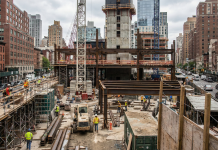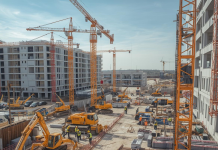COP30 opened with delegates fighting over the agenda itself—nearly 200 countries stalled on whether to even discuss accelerated emissions cuts and climate finance.
I’m tracking this chaos because it reveals where infrastructure money flows next.
While diplomats argue, the Baku-to-Belém Roadmap is already mobilizing $1.3 trillion annually for developing countries by 2035—a complete reshaping of how global infrastructure gets financed.
Follow the Construction Money
Construction accounts for 40% of global energy and industrial CO2 emissions. Over two-thirds originate from emerging markets—the same regions targeted by this $1.3 trillion finance mechanism.
Switching to greener technologies could reduce construction’s carbon footprint by 23% by 2035 and create a $3 trillion investment opportunity for emerging markets, with $1.5 trillion allocated to developing nations. That $1.5 trillion gap represents projects that won’t get funded under traditional finance—creating first-mover advantage for contractors who can access green capital.
Implementation Versus Negotiation
UN Secretary-General António Guterres declared at COP30: “It’s no longer time for negotiations. It’s time for implementation, implementation and implementation.” He warned that temporarily exceeding the 1.5°C warming threshold is increasingly likely—the window for action is closing.
The opening day gridlock shows the friction between stated ambitions and execution.
Brazil’s pushing 30 goals through “activation groups” using the concept of mutirão, an Indigenous word meaning collective task. The Tropical Forests Forever Facility launched with $5.5 billion in pledges, targeting $125 billion medium-term.
I’m watching these mechanisms closely because they determine which firms get capital access for the next decade of infrastructure projects.
What Construction Professionals Should Track
Climate finance is being restructured around implementation, and construction sits at the center. I’m tracking three things: how the $1.3 trillion gets distributed through specific financing mechanisms, which regulatory frameworks emerge to enforce the 23% emissions reduction, and how competitive dynamics shift as early movers capture green infrastructure contracts in developing markets.
By 2035, access to climate finance will determine which construction firms win contracts in emerging markets. The agenda fights in Belém are noise. The capital flows being restructured are the signal.








